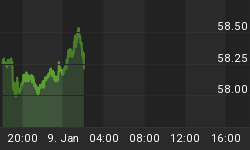While the rest of the world is on the brink of recession, the US might increase interest rates, and the US dollar could continue its upward trend, which started in 2011, for 5-7 years.
The US is leading again
In the US, recent data confirms the job market trend appears to be strengthening. In November, the labor market showed a healthy 321,000 new positions added in the non-farm sector, while the unemployment rate remained stable at 5.8%. In 2014, the average of the first 11 months has been above 230,000, while in 2012/13 it was less than 200,000 and in 2011 only 170,000. In addition to the improvement in the employment rate, the Gross Domestic Product (GDP) is increasing at an annual rate of almost 4.0%. Is this data telling the whole truth? Federal Reserve Chair Yellen stated that she would like to see real wages rising; otherwise, it might undermine consumer spending growth. In reality, wage growth has been almost flat in the past four years. The price index for personal consumption expenditures as a deflator increased only marginally over the past four years (less than 1.00%). In addition, the number of people available for work, who have abandoned the search of employment, is still very large. The study of cycles anticipates the unemployment rate to bottom out between 5.10% and 5.5% and then rise again for the final stage of the uptrend that began in 2000.
A cloudy world economy
While the US is pulling, in Europe, growth might be only around 1.0%. The European Central Bank is expected to start, like the US did in the past, a broad based quantitative easing program that might include the large Eurozone bond market. So far, ECB monetary policy has been devoted to easing the funding conditions of banks, but this strategy will not be enough to reach ECB's balance sheet objectives (returning to the level in force at the beginning of 2012). The request for the second Targeted Longer Term Refinancing Operations (TLTROs) and buying Covered Bonds and Assets Backed Securities (ABS) was only euro 130 billion. As Europe is struggling, the rest of the world is in or at the brink of recession. China is underperforming, and November's rate cut testifies to the fact that the government is well aware that growth is at risk. Japan is in recession, and emerging markets could be hit, in one way or another, by the decline in commodity prices. With rates increasing at home and declining abroad, the US dollar should continue to reinvigorate the uptrend that started in 2011. It might last for 5-7 years like it did from 1980-1985 and 1995-2002.
















